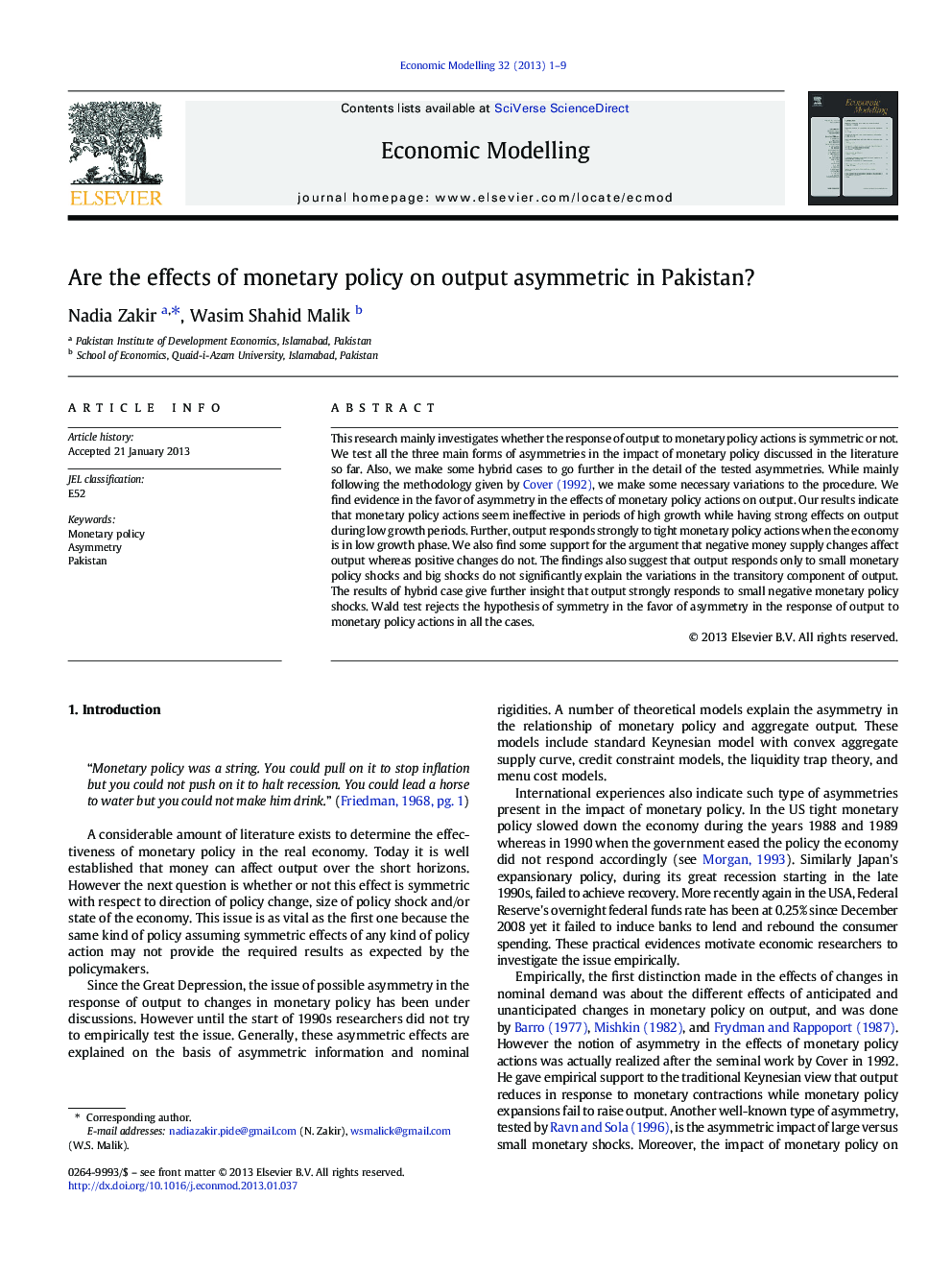| کد مقاله | کد نشریه | سال انتشار | مقاله انگلیسی | نسخه تمام متن |
|---|---|---|---|---|
| 5054880 | 1476536 | 2013 | 9 صفحه PDF | دانلود رایگان |
This research mainly investigates whether the response of output to monetary policy actions is symmetric or not. We test all the three main forms of asymmetries in the impact of monetary policy discussed in the literature so far. Also, we make some hybrid cases to go further in the detail of the tested asymmetries. While mainly following the methodology given by Cover (1992), we make some necessary variations to the procedure. We find evidence in the favor of asymmetry in the effects of monetary policy actions on output. Our results indicate that monetary policy actions seem ineffective in periods of high growth while having strong effects on output during low growth periods. Further, output responds strongly to tight monetary policy actions when the economy is in low growth phase. We also find some support for the argument that negative money supply changes affect output whereas positive changes do not. The findings also suggest that output responds only to small monetary policy shocks and big shocks do not significantly explain the variations in the transitory component of output. The results of hybrid case give further insight that output strongly responds to small negative monetary policy shocks. Wald test rejects the hypothesis of symmetry in the favor of asymmetry in the response of output to monetary policy actions in all the cases.
⺠There exists asymmetry in the effects of monetary policy in Pakistan. ⺠Output responds strongly to tight monetary policy actions in low growth phase. ⺠Negative money supply changes affect output whereas positive changes do not.
Journal: Economic Modelling - Volume 32, May 2013, Pages 1-9
